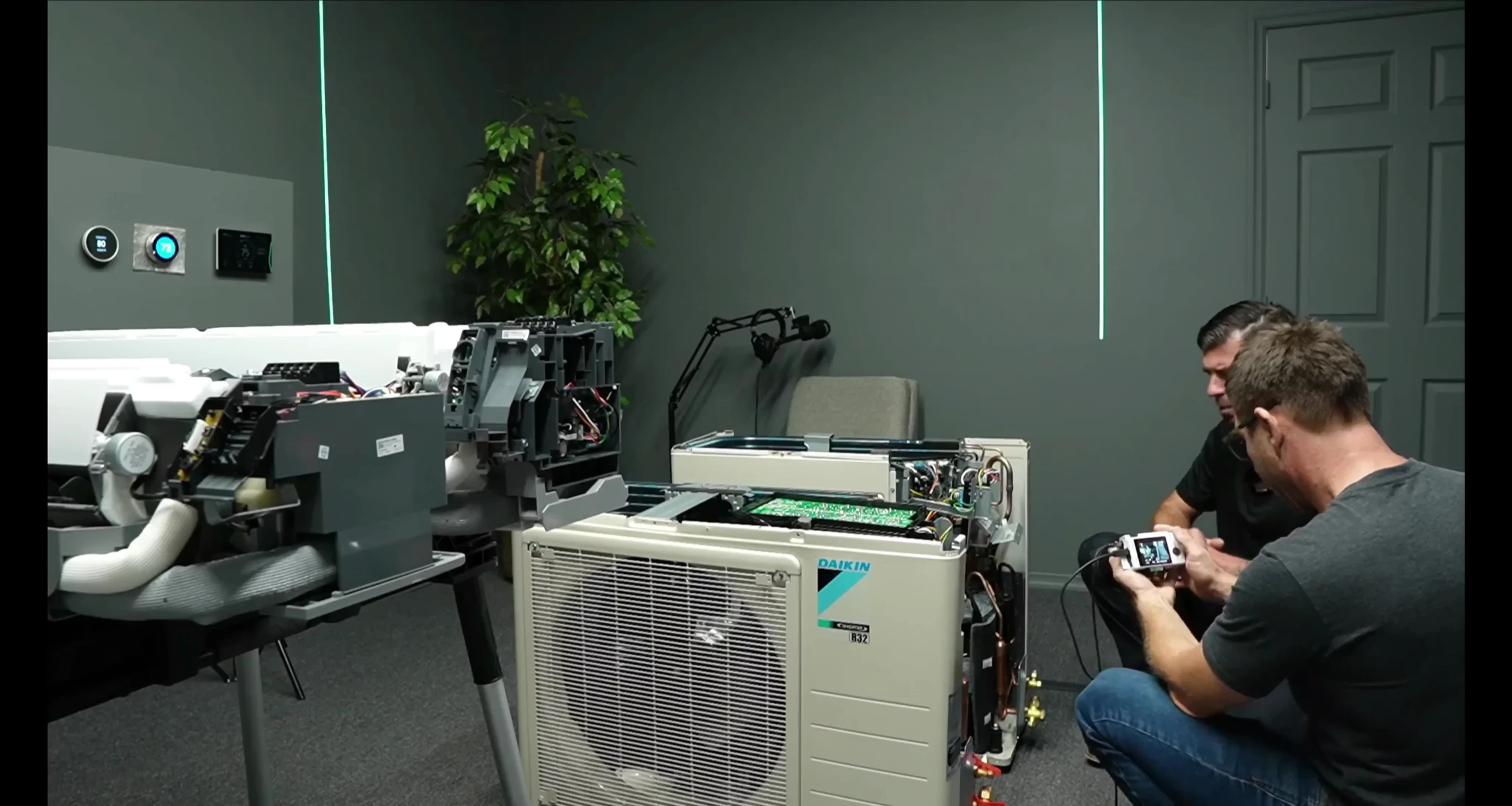The HVAC industry is undergoing a significant shift, transitioning from R410A to the more environmentally friendly R32 refrigerant. While R32's mild flammability raises concerns, its superior energy efficiency and lower global warming potential make it a compelling alternative. This article provides a detailed comparison of heat pumps utilizing both R32 and the phasing-out R410A, examining key differences in design, performance, and maintenance. We delve into the specifics, analyzing components like coils, fans, and control boards to highlight the advancements offered by R32 technology.This in-depth review compares a modern R32 unit with a comparable R410A model, focusing on tangible differences rather than theoretical specifications. We explore the practical implications of the refrigerant change, evaluating ease of access for repairs, noise levels, and overall efficiency. Ultimately, this comparison aims to clarify the advantages and disadvantages of each refrigerant, helping readers make informed decisions as the HVAC industry continues its transition toward more sustainable solutions.
Pros And Cons
- Board is easier to access
- Discharge pressure sensor included
- Improved quality components
- Simplified design with one board instead of two (easier diagnostics)
- Higher efficiency (18 SEER2 vs 17 SEER)
- Uses a more environmentally friendly refrigerant
- Similar dimensions to 410A models
- Slightly taller than 410A models
- Potentially more expensive refrigerant in the future (although currently priced similarly)
- Widely available
- No flammability concerns (but uses less environmentally friendly refrigerant)
- Board is harder to access
- No discharge pressure sensor
- Lower efficiency (17 SEER)
- Two separate boards
- Uses a less environmentally friendly refrigerant, soon to be phased out
Read more: Nuwave PIC Titanium Induction Cooktop Review: A Mixed Bag of Features
Refrigerant Transition: R32 and the Phased-Out R410A
The HVAC industry is transitioning from R410A to R32 refrigerants. R32, while mildly flammable, is considered more environmentally friendly. This shift has sparked debate and controversy, particularly considering the flammability aspect.

R410A, a blend of R32 and a flame suppressant (R125), was created to address flammability concerns during the phase-out of R22. However, this blend slightly compromises efficiency compared to pure R32.
This transition is ongoing, with future heat pumps and air conditioners expected to be factory-charged with R32 or the similar R454B. Concerns about flammability are mitigated by existing safety regulations and the widespread adoption of R32 in Europe and Asia.
Side-by-Side Comparison: R32 vs R410A Units
A direct comparison of an R32 unit and a phasing-out R410A unit reveals subtle yet significant differences. Both units share identical tonnage for a fair comparison. Initial observations reveal similarities in overall dimensions and terminal locations.

The R32 unit boasts easier access to the board, a design improvement over the R410A unit's less accessible setup. While the coil configurations are similar (three rows), the R32 unit utilizes slightly thinner tubes.

A key distinction lies in the R32 unit's inclusion of a discharge pressure sensor, a feature absent in the R410A model. This sensor likely contributes to improved performance and diagnostics.
Internal Component Analysis: Coils and Fan Blades
Examining the coils, the R32 unit exhibits an additional layer, enhancing its efficiency. The difference in coil construction is visually apparent, with the R32 coil being slightly thicker than the R410A coil.

The R32 unit's fan blade is notably larger and features a more aggressive pitch design compared to the R410A unit. These differences contribute to increased airflow and noise reduction. The R32 also has notches in the fan blade for further noise reduction.

The R410A unit's fan is a simpler composite material without the notches and enhanced pitch. This comparison showcases advancements in fan technology to improve efficiency and quiet operation in the R32 model.
Other Key Differences and Conclusion
The R32 unit features a single board design, simplifying diagnostics and repairs compared to the R410A unit's dual-board setup. This improvement contributes to ease of maintenance and reduced downtime.

The R32 (A2L) unit is rated higher on SEER2, indicating improved energy efficiency. Though dimensions vary slightly, with the R32 being taller but possibly wider, the warranty remains consistent.
Overall, the R32 unit exhibits superior features, including enhanced efficiency, simplified design, and improved noise reduction. While both refrigerants are currently comparably priced, this could change. The R32 system offers noticeable improvements in quality and efficiency.
